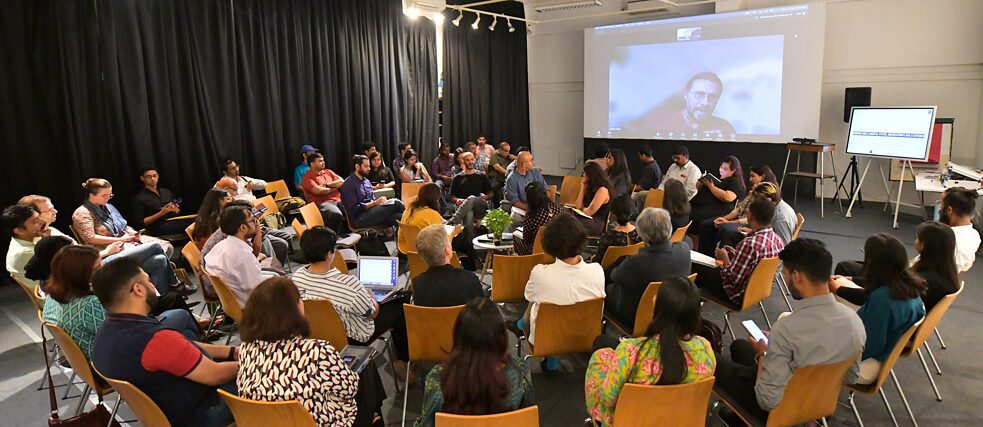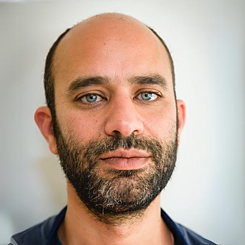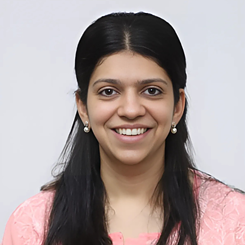Digital IDs: Platformisation, Public Infrastructures, and the Digital Citizen
Seeing like a Digital State, Advocating like a Citizen

Tech interventions such as digital IDs have increasingly become a part of governance across countries. While they aim to improve governance and provide convenience, the risks associated with them cannot be ignored. From surveillance concerns to the mismatch of power between the State and its citizens, a lot is at stake. The same holds true for the State’s projects on tech-enabled public infrastructure and its efforts to platformise State functions.
By Akshit Chawla
In times when governments are choosing to digitise their functions such as security and public welfare, it becomes important to ask: does digitisation really benefit citizens? Is increasing efficiency a good enough argument for more digitisation? What is the role of private players in this endeavour? And should we, as citizens, be worried about our basic digital rights such as privacy? In this discussion, five experts investigate the intersection of platformisation, public infrastructure, and digital citizenship.
The Case For Efficiency
Technological interventions help the State increase its efficiency by scaling up faster. However, what is efficient for the government might not necessarily be efficient for its citizens.Mansi Kedia: Digitisation increases efficiency. It can be understood by comparing a brick-and-mortar store with an e-commerce platform. An e-commerce platform can expand more easily by adding vendors because of its digital nature. Similarly, the government can scale up its functions of ensuring security and providing public services by using digital tools.
Disha Verma: It is important to ask what efficiency means in a welfare State. Is it merely releasing welfare benefits or is it also ensuring that these benefits actually reach the public? These are two different things. Take the case of government IDs. Interoperability between IDs can make it easier for the government to release funds to the citizens. If Aadhaar is connected to MNREGA cards, it simplifies the process of transferring benefits. However, this brings along numerous ground-level challenges such as data mismatches. For instance, women commonly change their names after marriage, leading to detail-discrepancies across IDs. Such errors can result in individuals being excluded from the databases that allow them welfare benefits.
Rainer Rehak: When talking about efficiency, we should also question – for whom will things get more efficient – the State or its citizens? It’s ideal for the State to have a database to better organise its functioning which might not be desirable for citizens. One can look at the German national ID which does not have a unified database but can still be used by individuals for identification purposes.
The Role Of Private Players & Consultants
Governments are increasingly resorting to private players and consultants for various technological interventions. However, their relationship has mostly been opaque and marred with regulatory uncertainty.Rahul Bhatia: A lot of consultants in India were trying to find a new project to work on post the Y2K incident (a programming flaw that may have caused problems when dealing with dates beyond December 31, 1999) and they were directed by the government to work on an identification system for the country. Over the years, consultants have assisted in the creation, propagation, and facilitation of this project, often by producing reports, the credibility which can be questioned. Despite this, these ideas gained traction among the stakeholders. Consultants play the role of echoing and amplifying certain ideas until they manifest. We’ve seen this with Facebook’s Free Basics Program and India’s Aadhaar system.
Disha Verma: Private players are a core part of Digital Public Infrastructure (DPI) projects launched by the government. However, the relationship between them is not well-regulated. In addition to working on a national level, private players also reach out to ministries and departments at local, district, and state levels. I see their role increasing a lot in the future.
Rainer Rehak: The consultations between public and private entities are not very transparent. When people try to get information about the concrete conditions of certain contracts that have been signed and the objectives behind them, the government often denies such information, labelling it a ‘trade secret’.
Mansi Kedia: Not involving the private sector limits the potential of Digital Public Infrastructures. For example, the government’s BHIM app for making UPI payments has seen limited use, whereas private apps like PhonePe and Google Pay have grown rapidly. Stronger regulations around public-private partnerships are essential. There has to be a fair, transparent, and accountable model around it. You cannot scale without the private sector — the government simply cannot manage everything on its own.
Looking At New Alternatives
The existing ways in which a Digital State is functioning present many challenges for its citizens. The alternative to how things are happening today is not to have no technological interventions but to develop alternatives that are in the interest of citizens.Rainer Rehak: I do not want to say that we should not collect any information. The alternative to the current approach is not to disengage from technological developments but to find new alternatives. One can also use different IDs for specific purposes to ensure that data is used for those intended purposes. A health ID, for instance, should only be used for healthcare services and not for something like income tax. Technically, it is possible to have an agile State without assigning an identifier to everyone. My idea is not to abandon technological developments but to seek better alternatives.
Mansi Kedia: There are many trade-offs with having multiple IDs. Seeding or linking various identities to Aadhaar has benefits, such as automation – you don’t need to constantly verify yourself. Aadhaar provides the first level of verification; the subsequent can be done through other specific IDs. In my view, apps like DigiLocker are much more accountable than other account aggregators.
Muhammad Radwan: During Germany’s 2020 pandemic lockdown, an app was quickly developed to tackle Covid-19 challenges. This decentralised app, Corona-Warn, was built in a short time while adhering to key principles and was later adopted across Europe – serving a good example of rapid development without compromising on values.
How Digitisation Is Affecting Citizens
Recording, digitising, and analysing citizen’s data can improve governance, but it also affects certain fundamental democratic rights like privacy and access to information.Disha Verma: The Indian government tends to be data-maximalist. It’s not just Aadhaar; we have multiple small identity projects where people are bucketed into a population — pensioners, school children, patients, ration beneficiaries. These coexist, but ultimately everything links back to Aadhaar. All your identities — your habits, mental health data, location data — could be linked to that single Aadhaar number or biometric, which we know is not kept very safely.
One problem in India is that the government operates silently. It does not provide enough transparency or efficiently communicate with its citizens, leading to a lack of trust. Aarogya Setu, for example, comes with challenges like the lack of information about its API and lack of clarity about who can access the location data of Indian citizens.
There is already a communication gap between citizens and the government in an analogue State. The layer of technology further creates a barrier to this. In India, not everyone understands technology or even owns smartphones. If people cannot understand the medium the government uses to communicate, how can they respond?
Rahul Bhatia: While the official year of initiation of Aadhaar was 2009, I’ve come across an earlier identification project where a feasibility report for an identification system was created. This was commissioned by the Ministry of Home Affairs in India, then headed by LK Advani. One of the reasons for bringing in this identification project was to identify ‘outsiders’ and ‘infiltrators’.
Rainer Rehak: The main rule of societal contract is that the State holds more power than individuals. However, with more State power comes the need for more accountability and transparency. On the one hand, the government asks citizens to trust its digital systems. On the other hand, it creates a system which distrusts its citizens (as digital IDs can potentially be used for surveillance).
Mansi Kedia: Digital systems, by design, can be better than the analogue ones. But for that to work, everybody’s interests must align in terms of purpose and participation. Without proper guardrails, there can be risks such as exclusion, concentration, and discrimination. We should be focusing more on building these guardrails to prevent counterproductive outcomes.
What Can Citizens do?
Citizens can exert pressure on policymakers to frame laws that protect their digital rights.Muhammad Radwan: We can push for guardrails and safeguards by pressuring the government to act in a certain direction. Europeans understand media literacy and have demanded action from their government. The US is not very far behind, though its laws are weaker. So, there is a growing trend indicating that the general public is becoming aware of what is happening.
Disha Varma: In India, unless the entitlement is tangible, people are less likely to claim it. For instance, employment and pensions are tangible rights that people can claim, unlike the right to privacy, which is something you carry with you and can be demanded from the State. It is important to understand why people engage more with certain rights than others. To address today’s digital challenges, India should: preserve physical avenues of engagement, have transparent communication between government and citizens, avoid blindly copying laws from the West, and implement a data protection law.
The Experts
Muhammad Radwan, Tactical TechMuhammad is the Project Lead for The Glass Room project at Tactical Tech, a role he has held since 2019. The project offers organizations, museums, and universities an innovative exhibition that explores the challenges of the digital world. Prior to this, Muhammad founded icecairo, one of Egypt’s first innovation spaces, which supports social entrepreneurs focused on climate, environment, and sustainability. He has also served as a business modeling consultant for tech hubs and as a trainer on digital safety and related issues. Muhammad is deeply passionate about the intersection of digital safety, privacy, climate justice, and technology. He holds a B.Sc. in Industrial Engineering from Texas A&M University.
Disha Verma, Internet Freedom Foundation
Disha Verma is an Associate Policy Counsel at Internet Freedom Foundation. A lawyer by training, Disha worked in health policy with expertise in community health and disease response before transitioning to tech policy. At IFF, she engages with tech deployment and digitalisation in the public sector with a focus on welfare distribution and social security, digital public infrastructure, governance AI, surveillance, policing, and digital transparency.
Dr. Mansi Kedia, Indian Council for Research on International Economic Relations
Mansi is Senior Fellow at ICRIER with over fourteen years of experience in public policy. Her research focuses on issues of the digital economy including governance of the internet, impact of emerging technologies, competition and digital public infrastructure. She was Co-Chair of the T20 Task Force on Our Common Digital Future: Affordable, Accessible and Inclusive Digital Public Infrastructure (2023), a Mid-Career Fellow of ISOC (2022) and member of the Direct Tax Committee (2017) and. She earned her B.Sc. Economics from St. Xavier’s, Kolkata, MBA from ISB, Hyderabad and PhD from IIFT, New Delhi.
Rahul Bhatia, Author, The Identity Project
Rahul Bhatia is an award-winning Indian author and journalist based in Mumbai. His first book is the best-selling The Identity Project (published as The New India internationally). His work has been published in the New Yorker, Guardian Long Reads, and other publications. He won the True Story Award in 2024, and was a Harvard Radcliffe Institute fellow in 2022-23. He mentors writers and journalists as part of the ‘South Asia Speaks’ collective, and was a co-founder of the Peepli Project, a journalism non-profit. A former advertising art director, Rahul Bhatia graduated in communication design from Pratt Institute, New York.
Rainer Rehak, Weizenbaum Institute
Rainer Rehak is a researcher in the "Digitalization, Sustainability, and Participation" group at the Weizenbaum Institute and an associated researcher at the WZB. He is pursuing his PhD at TU Berlin on IT security and data protection, with over 15 years of experience studying the societal impact of digitalization.
His expertise includes data protection, IT security, state hacking, and the ethics of AI systems. He serves as an expert witness for parliaments and courts and co-initiated the "Bits & Bäume" conference on digitalization and sustainability.
Moderation
Aditi AgrawalAditi Agrawal is a special correspondent at Hindustan Times where she reports on technology policy, privacy, online free speech, cyber security and surveillance. She also reports on the election commission of India.





